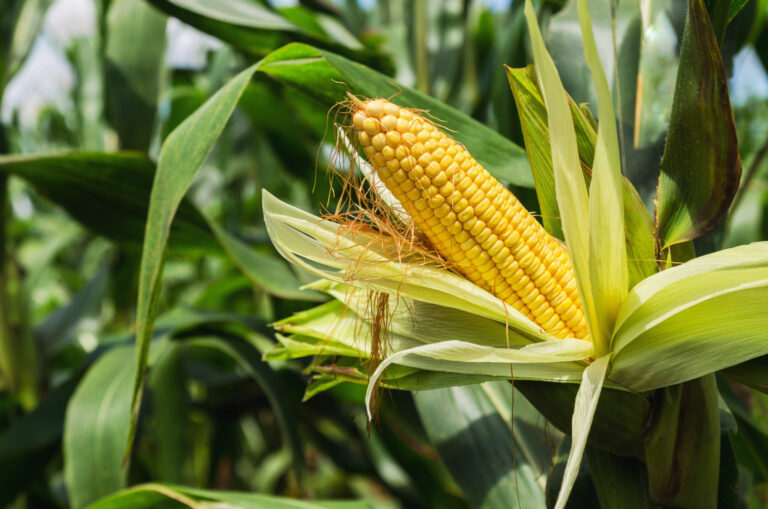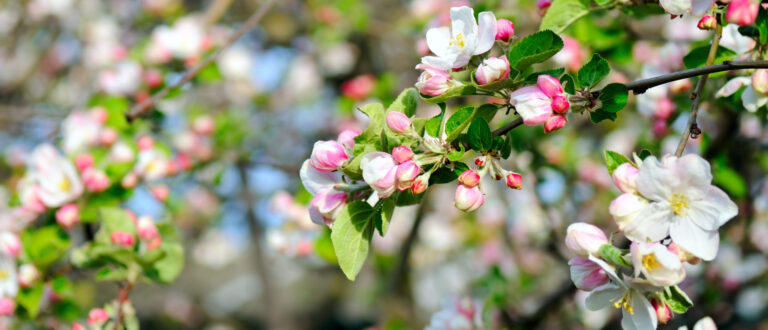DiPel® Biological Insecticide
DiPel® Biological Insecticide contains the Bacillus thuringiensis subsp. kurstaki (Btk) strain ABTS-351 and offers reliable, broad-spectrum caterpillar control on more than 200 crops. DiPel contains a unique balance of multiple insecticidal proteins and Bt spores that maximize efficacy against lepidopteran pests.
- Acts fast; larvae stop feeding within minutes
- Exempt from residue tolerance with as short as a 0-day PHI and 4-hr REI, allowing fruit to be harvested within hours of application (follow local labels and guidelines)
- Effective resistance management, having never developed cross-resistance with any other insecticide
- Tank mixable with most insecticides, fungicides, and foliar nutrients

Effective control of caterpillar pests
Proven effective for nearly 50 years in the field against practically all lepidopteran pests that affect agricultural crops around the world.
Harvest-ready with an excellent worker safety profile
Growers maximize harvest and marketing flexibility by controlling insects right up until harvest with DiPel.
Eco-friendly protection
DiPel is derived from a naturally occurring bacteria that selectively controls caterpillar pests without affecting beneficial insects and pollinators, including bees.
Dependable
A history of unmatched consistency means growers know what they get with every lot of DiPel.
Key Crops
Berries
Ornamentals
Plantation Crops
Row Crops
Tree Fruit
Tree Nuts
Vegetables
Resources
Learn more about DiPel
Other DiPel Videos
- The DiPel Difference – Quality in Manufacturing
- Technologies Ahead of their Time: DiPel and XenTari
- Using DiPel Effectively in Your Operation
- Managing Pesticide Residues with DiPel Biological Insecticide
- An Integrated Approach with DiPel and XenTari Biological Insecticides
- The Facts about Managing Resistance with DiPel and XenTari Biological Insecticides
- DiPel and XenTari: Commitment to Quality with Live Insect Bioassay
- Superior Efficacy Begins with Reliable DiPel Formulations
- A Better Bt – The DiPel Difference
Always use and follow label instructions.
- Acleris gloverana (Blackheaded Budworm)
- Acrobasis vaccinii (Cranberry Fruitworm)
- Adoxophyes orana (Summer Fruit Tortrix)
- Agrotis ipsilon or others (Cutworm)
- Agrotis segetum (Turnip Moth)
- Alabama argillacea (Cotton Leafworm)
- Amorbia humerosana (Amorbia Moth)
- Anarsia lineatella (Peach twig borer)
- Anticarsia gemmatalis (Velvetbean Caterpillar)
- Archips argyrospilia (Fruit-tree Leafroller)
- Archips rosanus (Filbert Leafroller)
- Argyrotaenia citrana (Orange Tortrix)
- Argyrotaenia pulchellana (Grape Tortrix)
- Argyrotaenia velutinana (Redbanded Leafroller)
- Ascia monuste orseis (Ascia monuste)
- Autographa gamma (Silver Y)
- Automeris io (Io Moth)
- Brassolis sophorae (Palm Caterpillar)
- Cacoecimorpha (Carnation Tortrix)
- Cadra figulilella (Raisin Moth)
- Cadra cautella (Almond Moth)
- Choristoneura fumiferana (Spruce budworm)
- Choristoneura pinus (Jack Pine Budworm)
- Choristoneura rosaceana (Obliquebanded Leafroller)
- Chrysodeixis chalcites (Tomato Looper)
- Chrysodeixis includens (Soybean Looper)
- Colias eurytheme (Alfalfa Caterpillar)
- Condylorrhiza vestigialis (Poplar moth)
- Crambus spp. (Sod Webworm)
- Crocidolomia pavonana (Cabbage Cluster caterpillar)
- Cydalima perspectalis (Box Tree Moth)
- Cydia pomonella (Codling Moth)
- Cydia/Grapholita molesta (Oriental fruit moth )
- Cynthia cardui (Painted Lady)
- Datana integerrima (Walnut Caterpillar)
- Datana major (Azalea Caterpillar)
- Depressaria erinaceella (Depressariidae)
- Diaphania hyalinata (Melonworm)
- Diatraea crambidoides (Southern cornstalk borer)
- Diatraea saccharalis (Sugarcane borer)
- Dryocampa rubicunda (Greenstriped Mapleworm)
- Ecdytolopha aurantiana (Citrus Fruit Borer)
- Ennomos subsignaria (Elm Spanworm)
- Ennomos subsignaria (Spanworm)
- Ephestia elutella (Tobacco Moth)
- Epiphyas postvittana (Light brown apple moth)
- Erinnyis ello (Ello Moth (Hornworm))
- Erionota thrax (Banana Skipper)
- Estigmene acrea (Saltmarsh Caterpillar)
- Eumorpha achemon (Achema Sphinx Moth (Hornworm))
- Evergestis rimosalis (Cross‑striped Cabbageworm)
- Grapholita molesta (Oriental Fruit Moth)
- Grapholita packardi (Cherry Fruitworm)
- Harrisina americana (Grapeleaf Skeletonizer)
- Helicoverpa zea (Corn earworm)
- Helicoverpa zea (Cotton Bollworm)
- Helicoverpa zea (Tomato Fruitworm)
- Helicoverpa zea (Podworm)
- Heliothis virescens (Tobacco Budworm)
- Heterocampa guttivitta (Saddle Prominent Caterpillar)
- Homadaula anisocentra (Mimosa Webworm)
- Hypercompe scribonia (Banana Moth)
- Hyphantria cunea (Webworm)
- Lambdina fiscellaria (Hemlock Looper)
- Lobesia botrana (European Grapevine Moth)
- Mamestra brassicae (Cabbage moth)
- Manduca sexta (Tobacco Hornworm)
- Manduca spp. (Hornworm)
- Melissopus latiferreanus (Fall Webworm)
- Mythimna unipuncta (White-speck/Armyworm Moth)
- Neophasia menapia (Pine Butterfly)
- Nymphula stagnata (China Mark Moth)
- Opsiphanes invirae (Lowland Owlet)
- Orgyia vetusta (Western Tussock Moth)
- Ostrinia furnacalis (Asian core borer)
- Ostrinia nubilalis (European Corn Borer)
- Paleacrita merriccata (Cankerworm)
- Paleacrita vernata and Alsophila pometaria (Spring and Fall Cankerworm)
- Pandemis cerasana (Barred-Fruit Tree Tortrix)
- Pandemis spp. (Fruit-tree Tortix)
- Papilio cresphontes (Orangedog)
- Paralobesia viteana (Grape Berry Moth)
- Peridroma saucia (Variegated Cutworm)
- Phryganidia californica (California Oakworm)
- Phthorima-ea operculellaI (Potato tuber moth)
- Pieris brassicaeI (Large White)
- Pieris rapae (Imported Cabbageworm)
- Pieris rapae (Small White)
- Plathypena scabra (Green Cloverworm)
- Platynota flavedana (Variegated Leafroller)
- Platynota idaeusalis (Tufted Apple Budmoth)
- Platynota stultana (Grape Leafroller)
- Platyptilia carduidactyla (Artichoke plume moth )
- Playnota stultana (Omnivorous Leafroller)
- Plodia interpunctella (Indian Meal Moth)
- Plutella xylostella (Diamondback Moth)
- Prays citri (Citrus Blossom Moth)
- Prays Oleae (Olive Moth)
- Pseudoplusia includens (Falso Medidor)
- Pseudoplusia includens (Soybean Looper)
- Rachiplusia Nu (Sunflower Looper)
- Sabulodes aegrotata (Omnivorous Looper)
- Schizura concinna (Redhumped Caterpillar)
- Scrobipalpa ocellatella (Beet Moth)
- Sibine stimulea (Saddleback Caterpillar)
- Spodoptera frugiperda (Beet Armyworm (Spodoptera exigua))
- Spodoptera litura (Cluster Caterpillar)
- Spodoptera spp., e.g. exigua, frugiperda, littoralis, Pseudaletia unipuncta (Armyworm)
- Syntomeida epilais (Oleander Moth)
- Thaumetopoea pityocampa (Pine Processionary Moth)
- Thecla basilides (Thecla‑Thecla Basilides (Geyr))
- Thymelicus lineola (European Skipper (Essex Skipper))
- Thyridopteryx ephemeraeformis (Bagworm )
- Thyrinteina arnobia (Eucalyptis Defoliator)
- Trichoplusia ni (Cabbage Looper)
- Udea rubigalis (Greenhouse leaftier)
- Various Lasiocampidae (Tent Caterpillar)
- Xylomyges curialis (Citrus Cutworm)





